
|

|
|
Home Site Search Contact Us Subscribe
|
|
A Filtered View #3: Socially Progressive, Architecturally Conservative: A San Francisco Paradox "Disruption" is the new buzz-word, but our new architecture (with a few exceptions) is anything but disruptive. A hallmark of a socially progressive environment is diversity - we need diversity in architecture, too. By Charles F. Bloszies, FAIA December 17, 2015 Editor’s note: This is the third in a new series of musings by San Francisco-based architect Charles F. Bloszies, FAIA.
It is easy to understand why San Francisco is socially progressive. The city has been unencumbered by social mores since the Barbary Coast days of the 1849 California Gold Rush. It has always been a magnet for free-spirited individuals seeking opportunity and fortune in a place with a pleasant climate. Oddly, as any architect who has practiced here will tell you, it is a rough place in which to be creative.
It is a beautiful city, but its beauty is more natural than manmade. Some have theorized that topography is, in part, responsible for the dearth of progressive architecture in the Bay Area, and argue that at best, a building should blend in with its surroundings. More often, they say, the hand of man has stained the virgin landscape, but on rare occasions they might admit that a structure can be an improvement. The entrance into the San Francisco Bay would not be nearly as handsome without the Golden Gate Bridge. Nonetheless, we have been busy bees here, building more and more to accommodate an increasing number of people who want to live here precisely because of its natural beauty. After New York, San Francisco is the second densest city in the United States.
So why is a dense, socially progressive city architecturally conservative? This paradox might be explained by considering the forces outlined below – they push pretty hard from all directions. The laws of physics would say that the result is no forward motion. The laws of politics would say that the result is compromise. It’s not easy to push a strong design idea through this meat grinder, that’s for sure.
It could be that the city has an urban fabric that was stitched together quickly and uniformly a 100 or so years ago. Blame our famous 1906 earthquake and fire for that. There are still large sections of San Francisco where most of the buildings date from 1908-1910. Streets in these sectors of the city are charming, lined with individual buildings that have acquired the patina of time. The historic preservation movement is strong, plus everybody likes old buildings – they are architecture’s comfort food. As a consequence, certain enclaves are very resistant to change and seem to be encircled by a kind of architectural “Do Not Disturb” sign. Europeans seem to be less bothered by modern interventions into cities much older than ours, and in the right proportion, a strikingly new can make the old even richer.
Not surprisingly, there are a lot of activists in San Francisco, and a lot of wealth, too. The framework of our local government allows anyone to have a voice, especially on issues of city planning. For example, the city was down-zoned by voter fiat in 1986 amid fears of “Manhattan-ization’ – height limits were lowered, in some cases well below the tops of existing buildings, and a cap was placed on the amount of office development allowed each year. Zoning laws from this era are still on the books, so even modest buildings proposed in the urban core need all kinds of special agency approvals and variances. A myriad of master plans and re-zoning ordinances have been layered onto the 1986 land-use laws, giving special interest activists pretext to oppose just about anything. Some seem to do so for sport and, as a result, developers are reluctant to take even a modest risk on any design that leans towards the avant-garde.
However, policy is now shifting. Smart urban planners are advocating smart-growth, and density is no longer a four-letter word. San Francisco’s resilience during the recent recession has been driven in part by a demand from people who want to live and work here. “Disruption” is the new buzz-word, but our new architecture (with a few exceptions) is anything but disruptive; for the most part, it is well-tailored, and, well . . . conservative.
Our planners are intelligent, thoughtful, and opinionated. Controls they have enacted in the past few decades have allowed San Francisco to resist changes that have led to banality and decay found in many American cities, especially those in the West. Local, small-scale business still thrives here, and it is said that one could eat at a new restaurant every day for two decades. The city invented the “parklet,” where a formerly metered parking space is converted into an urban mini-park. San Francisco has around 50 parklets, and its Pavement to Parks program has inspired urban design all over the world. How progressive is that?
But when it comes to buildings, planners here give us architects way too much help. They meddle. As bureaucrats they must pay heed to the forces of their superiors, special interest groups, politicians, and various civic power brokers. Some planners are architecturally idealistic and push designs toward the latest fashion, while others are nostalgic and push in the opposite direction. All are trying to ensure that each new stitch in the urban fabric is defensible.
Planners are the gate keepers, but once a design has survived the process of cracking the gate open, the journey has just begun. In San Francisco, almost every project over 25,000 square feet in area must go through design review at public hearings. Here, New York’s as-of-right pencil skyscrapers would get stubbed-down in a nanosecond. Public hearings at City Hall on design issues are probably the best entertainment value in the country. Architects (and their clients) are pitted against special interest opponents who often retain other architects to “suggest” alternative designs. Intelligent, thoughtful, and opinionated commissioners opine, conditions of approval are meted out, and the final design may or may not reflect its original intent. Most often, a project is declared a success when the outcome leaves all of the stakeholders equally dissatisfied.
Not that every building needs to be an architectural monument – foreground, by definition, requires background. But both foreground and background should be high-quality design and need not be conservative. Good architecture has a timestamp that reflects its societal context, not necessarily bygone eras of its neighbors. A hallmark of a socially progressive environment is diversity – we need diversity in architecture, too.
No matter how hard the forces push in opposing directions, entrepreneurial influences will continue to stimulate development in San Francisco for the foreseeable future. As O. Henry said of New York City, “It’ll be a great place if they ever finish it.” Change is indeed the only constant. Special interest activists, planners, and commissioners should relax a little and let us architects do what we have been trained to do. We love the city, too. Let the surgeons operate; when the procedure is over and you wake up, it will be o.k.
Charles F. Bloszies, FAIA, is an architect, structural engineer, and writer – and principal of a practice in San Francisco focused on complex urban infill projects. He is the author of Old Buildings, New Designs – Architectural Transformations, published in 2011 by Princeton Architectural Press and now in its third printing.
See also:
A Filtered View #1: Buckminster Fuller (Not Al Gore) Invented the Internet
A Filtered View #2: Ubiquitous Stuff - Why is Most of it so Ugly? Maybe Apple should design all of this stuff; or maybe Philippe Starck.
|
(click on pictures to enlarge) 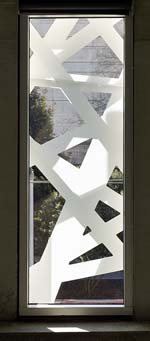 Matthew Millman Photography A filtered view 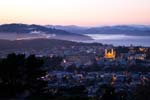 tonywebsterphoto.com via Wikimedia Golden Gate Bridge 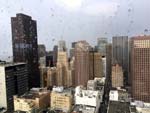 Office of Charles F. Bloszies With a couple of notable exceptions, a bunch of dull buildings on a dull day. 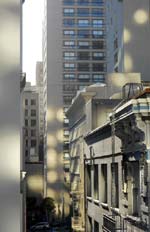 Office of Charles F. Bloszies Do Not Disturb 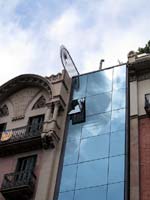 Office of Charles F. Bloszies Just the right amount of new in Barcelona’s Eixample District 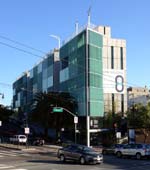 Office of Charles F. Bloszies 8 Octavia, a great building by Stanley Saitowitz / Natoma Architects that somehow made it through the public process unscathed.  Rodrigo Lima via Behance.net The really cool DNA Parklet |
© 2015 ArchNewsNow.com